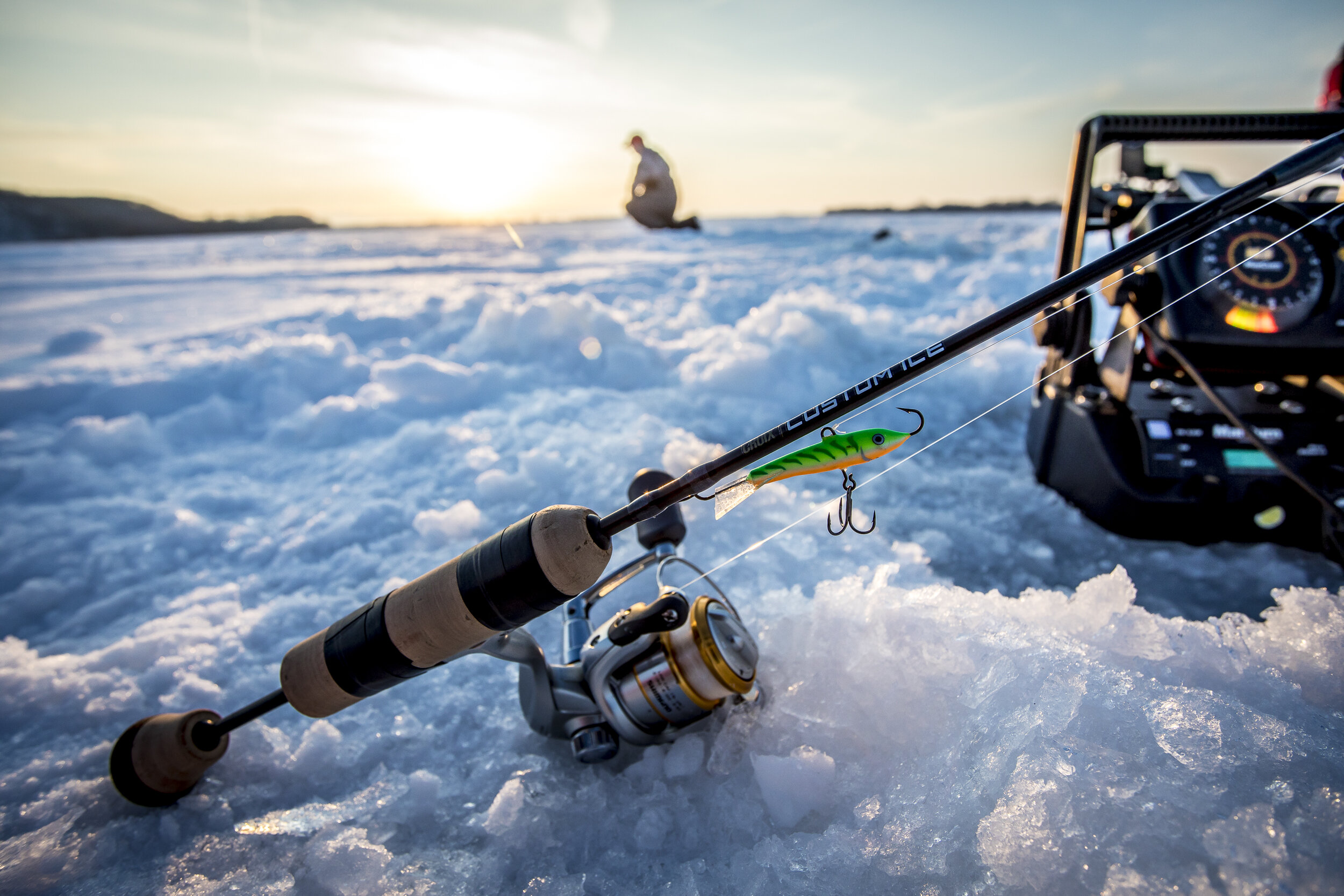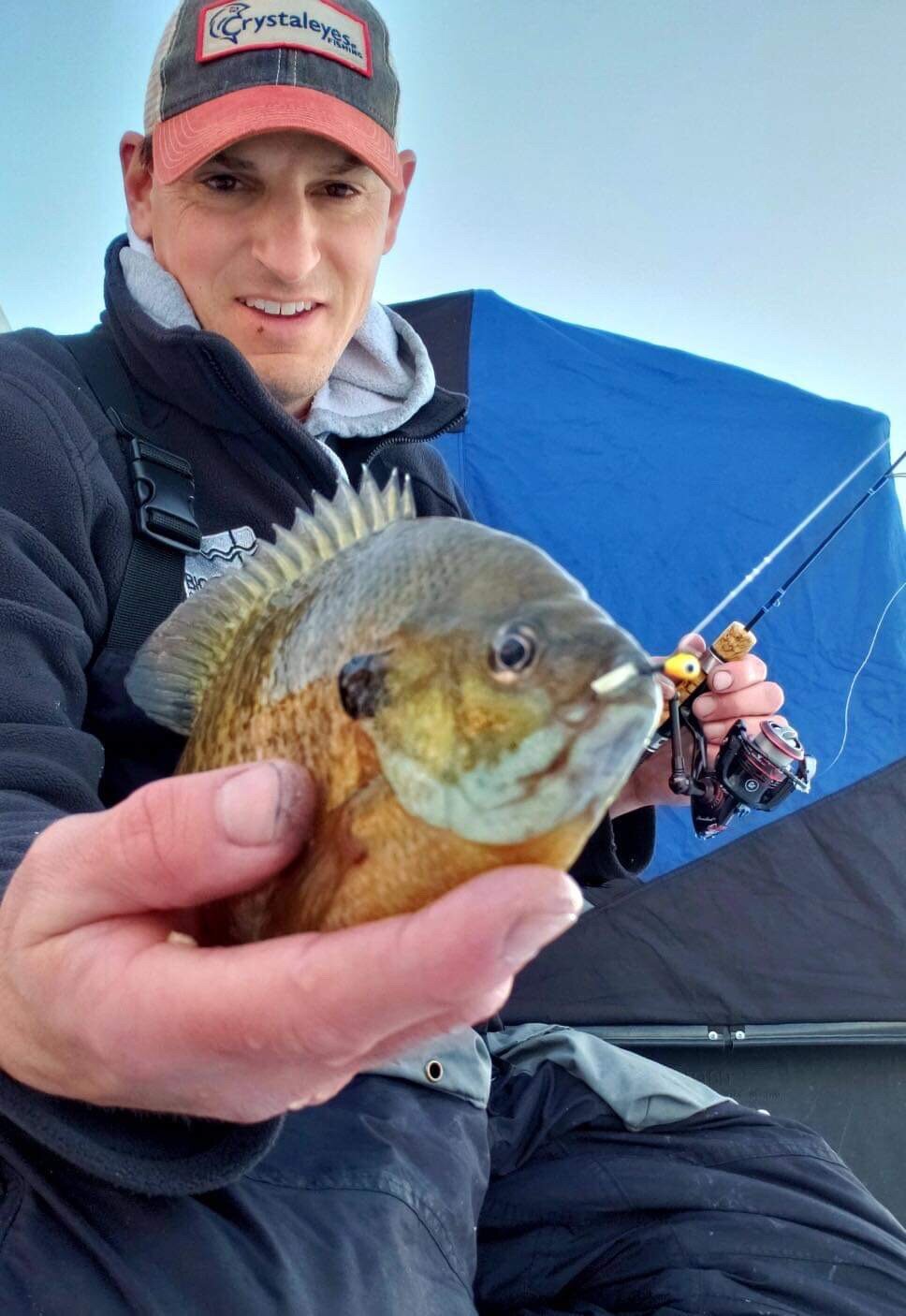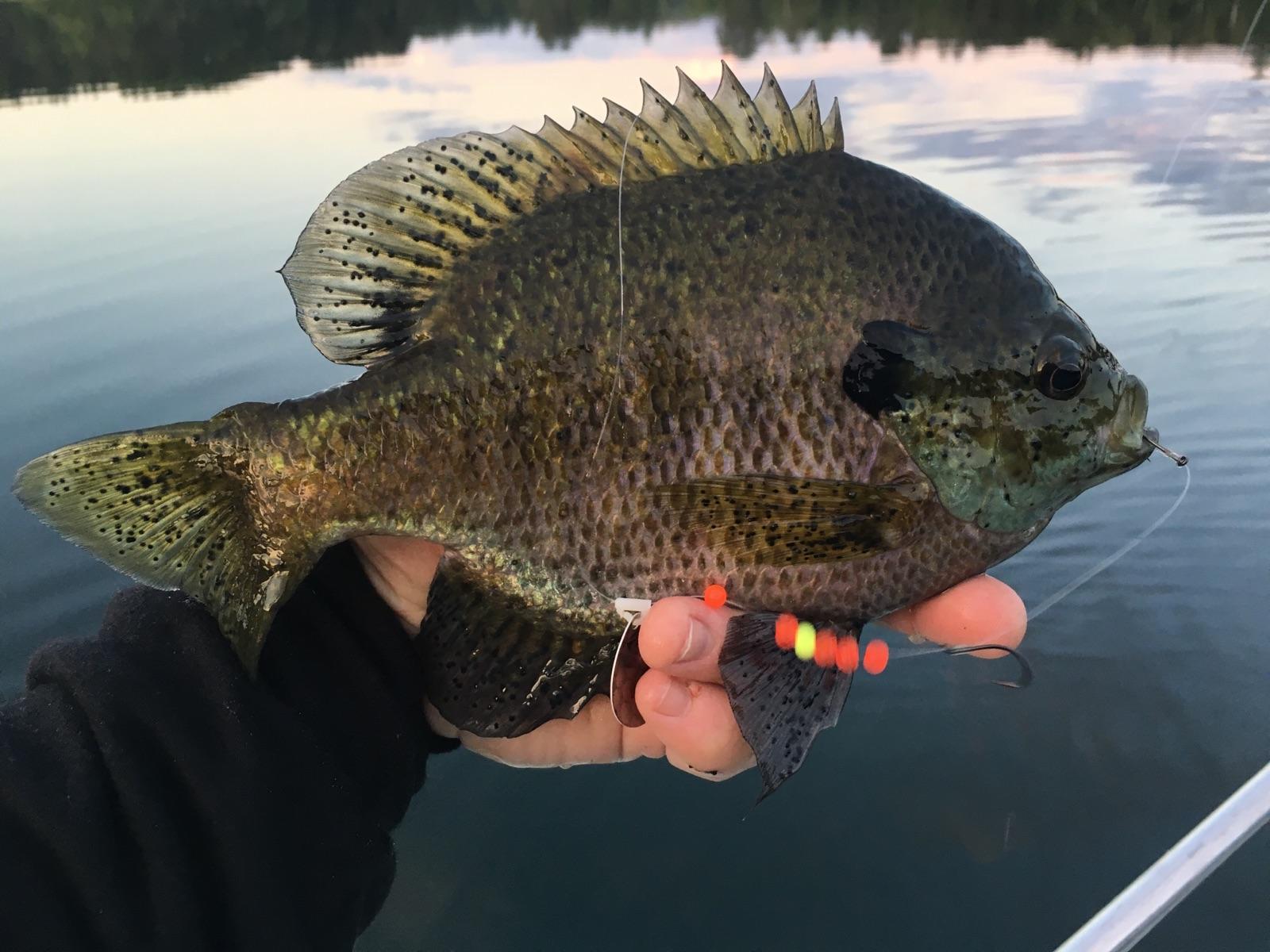The combination of the St. Croix CCI Search Bait Rod and this reel makes for a dynamite Jigging Rap/Walleye setup! - Photograph by Matt Addington
2019 Ice Reel Review
Over the years, I’ve owned a pile of ice rods, each of them with some type of reel strapped on for about any species that swims under ice. Most perform quite well to be honest, though there’s increasing competition in the space for who is top of the heap. All of which is a bit mis-leading, because it’s hard to crown any-one reel brand or size the true “winner,” as it all depends on what kind of ruler you use to do the measuring.
With that in mind, here’s what I look for in a good ice reel. Note that these criteria are solely my own, and you may have a different litmus test for what’s the best. I tend to focus on the following attributes, in this order:
Cold Weather Performance – An ice reel needs to operate on, well….ice. You’d be surprised how many ice reels gum up in extreme cold, and how many more have drag issues when taken back and forth between warm and cold. Of course, these scenarios play out on ice daily, and because so many manufacturers like to freezer test then slap approval on a product, there’s plenty on the market that don’t operate well. Ball bearings be damned, I’ve had some high count ball bearing reels that goo-up when it gets cold.
Price – Especially with ice reels, few species require you spend up the chain to get a quality performer. There are specialty exceptions, but the price vs. performance curve really starts to plateau at $60-70. There are also some great reels at half that price, so you really don’t have to break the bank to get a great ice reel.
Drag – Better drags are what you tend to get for more money, but you can tweak drags with aftermarket carbon fiber discs, so even poorer drags can be upgraded pretty cheap. For the most part, I’m concerned with quality drag when it comes to large perch and up. Trophy caliber predators like walleye, pike, lakers, and the like require a really good drag. You’ll simply pay more for better reels with better drags, and if you’re targeting these species, you should.
Weight – Most ice reels these days are all within a few ounces of each other, but with the increasing sensitivity and weight-savings of custom rods these days, every ounce matters. It affects the balance of the rod, where I’ll mount them, and ultimately can make or break any combination of rod and reel you have.
Ball Bearings – I don’t care. There, I said it. To be more accurate, I care, but there’s so much misleading information on what ball bearings do for you, location of quality ones matters more than sheer number of them placed inside of a reel. That’s information you get through supreme nerdery and lots of experience, and even then, the above criteria tend to sort the best from the rest before we ever get down to ball bearings.
Here’s a few of my favorites:
The Panfish/Value Play –
Shimano Sienna 500 – Let’s start with the O.G. of lean/mean ice reels in the Sienna. Mind you, it’s not the best, but it was never designed to be. It’s a good reel, for a decent price, that’s been proven for most of my panfish setups. Can you do better? Oh yeah, and the drag should be updated too, as it’s sluggish in extreme cold, then too forgiving back in the shack. Still, it’s a volume over quality scenario if you’re putting numbers of reels on a pile of panfish rods. To achieve quality, I probably wouldn’t look to spend less than the price of a Sienna.
Okuma Ceymar C10 – You get a lot in this reel, and it’s performed well for me on ice with a few upgrades from the Sienna. I especially like the oversized bail, as I can be pretty tough on my stuff like most ice anglers. The drag is just like the Sienna’s – oiled felt – though I didn’t think it benefitted from a custom disc drag I put in it as much as the Sienna did. Advantage Ceymar. That said, I haven’t owned these as long, so I have no idea how well they’ll hold up over time. Advantage Sienna. Call it a push?
If you’re looking for the best of the best, and cost isn’t as much a consideration, consider the Tatula in the 1000 size, especially if your whole game is about performance on big predators. This is an open-water reel that’s found its way on my biggest and baddest rods, both on account of its extreme weight-savings (it’s lighter than almost all other 500 series reels), but also because of its buttery smooth drag and bigger frame. You’ve got the size without the weight, and I’ve got fat hands so this thing isn’t a tiny knuckle-buster, but rather a dream to fight big fish with.
This may be blasphemy to some, but my pick is a <$30 Eagle Claw. In part because the category is still developing in my opinion. You’ve got cheapos and nearly $100 reels that perform very similarly, so price vs. performance is all over the board. I’m a huge fan of the idea and theory of inline ice reels, but in practice, many I’ve tested are cumbersome, poorly balanced, and promote rather than prevent tangles. The Eagle Claw inline is no worse than the rest, with a great price tag to boot!
Shimano’s been doing this part of the category really well for a long time, and I’ve owned Sedona 500s for just as long. Step up from the Sienna, and you get some much better drags, and a reel that performs well with little fuss. You pay more for this reel than most, but you go into the deal knowing what you’re going to get. You could even step up the lineup to Sahara and Nasci, but the Sedona is my pick for all around walleye as I own a few.
Baitfeeder reels are really nice for hanging a deadstick, whether in the house or on open ice. The idea is that fish can run without feeling the reel/rod (you adjust the pressure with a tensioner knob), then when you’re ready to set the hook, flip the switch from bait-feed mode to anti-reverse and drill ‘em. These are new on the market, and though I’ve used previous editions, I have no first hand experience with these actual reels. I’m going with four brand new Okuma Avenger ABF-500’s this year for what it’s worth.
I had a chance to use the Daiwa Q-series 750 reels last year and was impressed with each of the models. Most importantly, the 750 size is a real sweet spot that allows slightly larger spools, meaning less ice-line memory. Best of all, it does that without being overweight. Speaking of, heft is comparable across the board with Shimano and others, though the quality at the lower price points was especially notable when put head to head vs. other manufacturers. Not to mention, the handles have a push-button fold, so you can easily compact them for storage in a rod case. Sounds simple, but it’s a luxury to have your rod case shut well! Drags are pretty smooth for reels $50 or less, and the high end version is sharp looking and a performer. I don’t think you can go wrong with any of them, and would pair the QR750s on panfish setups, with the QG750 and QZ750 going on my walleye setups.
Again, these will likely edge out the Sienna for price vs. performance, as Daiwa’s track record has been damn good as of late, but with no durability testing over time we’ll have to see.
Honorable Mention –
The Pflueger President is a good reel, but IMO gets somewhat lost in the mix of quality Shimanos, up-and-comer Okumas, and the new Daiwas. If you’re a Pflueger fan, buy with confidence, it’s a good reel that I’ve had ice success with.







